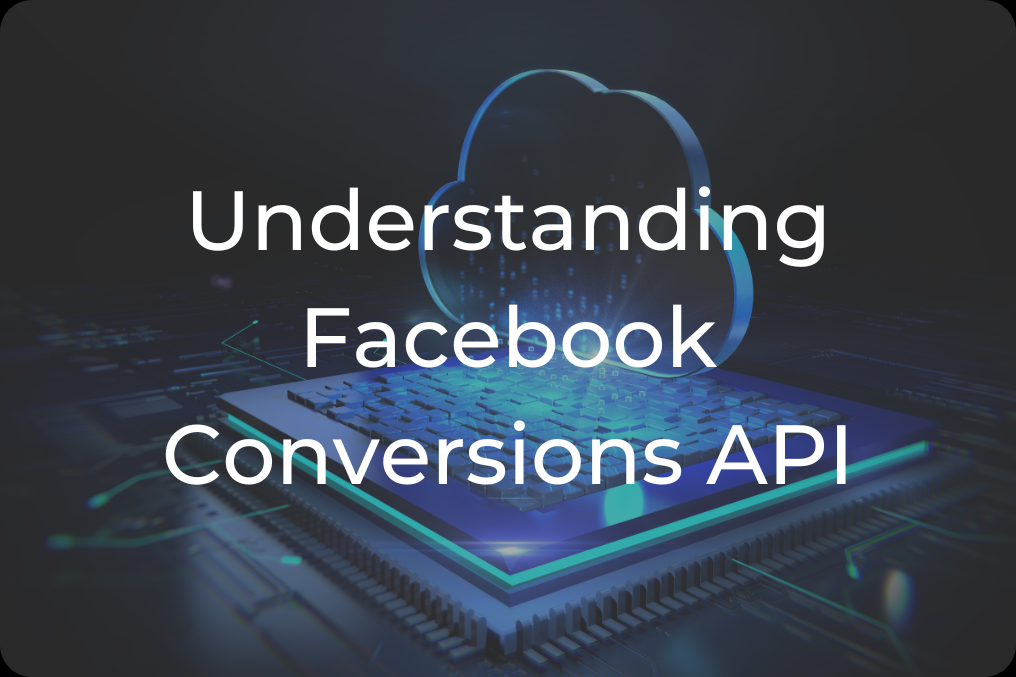
“We’ll help you boost performance, simplify processes, and drive growth with data solutions.”
9 Crucial Factors Impacting Your Website's Conversion Rate and How to Fix Them
“Conversion optimization is not just about the landing page. It’s about the whole experience.” – Neil Patel, Co-founder of Crazy Egg and Hello Bar
Table of Contents
Toggle
In today’s digital era, businesses increasingly rely on their websites as critical drivers of sales, leads, and customer engagement. However, attracting visitors is only the first step; converting those visitors into paying customers or subscribers is the ultimate goal. This is where the conversion rate of your website becomes crucial. A high conversion rate is a sign that your website’s content, user experience, and marketing strategies are aligned with the needs of your target audience. But what exactly affects your website’s conversion rate, and how can you improve it?

In this blog, we will explore the key factors that influence your website’s conversion rate and provide actionable strategies for improvement. We’ll also share real-world data and examples to help you better understand how to turn visitors into customers and achieve long-term success.
What is Conversion Rate, and Why Does it Matter?
The conversion rate is the percentage of website visitors who complete a desired action, such as making a purchase, signing up for a newsletter, or filling out a contact form. It is calculated by dividing the number of conversions by the total number of visitors and then multiplying by 100 to get a percentage. For example, if 500 out of 10,000 visitors make a purchase, the conversion rate is 5%.
Why Does it Matters?
One key reason conversion rate matters is that it enables businesses to achieve more with less. Instead of focusing solely on driving more traffic to your site, improving the conversion rate allows you to extract greater value from your current audience, reducing customer acquisition costs. A well-optimized website or landing page can turn casual visitors into paying customers or qualified leads, leading to increased revenue.
Additionally, conversion rate optimization (CRO) can help identify and resolve issues related to user experience, such as confusing navigation, slow page load times, or poorly designed calls-to-action. Enhancing these elements not only boosts conversions but also improves overall customer satisfaction and trust.
According to a study by WordStream, the average conversion rate across industries is around 2.35%. However, top-performing websites achieve conversion rates of 11% or higher, showing a significant opportunity for businesses to improve their performance.
Key Factors That Affect Website Conversion Rate
Several factors influence your website’s conversion rate, ranging from technical aspects like website speed to psychological triggers that persuade users to take action. Below are the critical factors to watch out for:

1. User Experience (UX) Design
User experience is at the core of conversion rate optimization. A well-designed website is intuitive, user-friendly, and meets the needs of your audience. If users find your site difficult to navigate, they will leave before converting.
How to Fix It
1. Simplify the navigation: Ensure your website’s layout is simple, with a clear call-to-action (CTA) on every page.
2. Customer Journey Mapping: Understand how a visitor moves through your site and identify friction points.
3. Improve load times: According to Google, 53% of mobile users abandon websites that take longer than 3 seconds to load. Use tools like Google PageSpeed Insights to identify and fix load time issues.
Example: A/B testing conducted by Unbounce found that simplifying a website’s layout and focusing on a single CTA can increase conversions by up to 20%.
2. Mobile Optimization
With more than half of all web traffic now coming from mobile devices, having a mobile-friendly website is crucial. If your site isn’t optimized for mobile, you risk losing a significant portion of potential customers. You can use Google’s Mobile-Friendly Test to see if your site meets modern mobile standards.
How to Fix It
1. Responsive Design: Use CSS media queries to ensure your site automatically adapts to different screen sizes for a smooth user experience.
2. Simplified Navigation: Design menus and buttons to be easily accessible for mobile users, especially for thumb-based navigation.
3. Accelerated Mobile Pages (AMP): Implement AMP to speed up mobile page loading times and improve overall performance.
Example: Bank of America enhanced its mobile site to improve user experience, leading to a 45% increase in mobile banking sessions.
3. Website Speed and Performance
Website speed is one of the most overlooked yet critical aspects of conversion rates. Visitors have short attention spans, and long loading times can result in high bounce rates. Google’s research shows that as page load time goes from 1 to 5 seconds, the probability of bounce increases by 90%.
How to Fix It:
1. Compress images: Large image files slow down load times. Compress images using tools like TinyPNG or ImageOptim.
2. Use a content delivery network (CDN): A CDN can help distribute content across multiple servers worldwide, reducing load times for users based on their geographic location.
3. Optimize server response time: Check your website hosting solution. A better hosting provider can significantly impact server response time and improve your website’s overall performance.
Example: Walmart found that improving its site speed by 1 second resulted in a 2% increase in conversions. This shows the direct relationship between website speed and conversion rate.
4. Compelling Call-to-Actions (CTAs)
Your call-to-action buttons guide users towards the conversion goal. CTAs should be visible, compelling, and clearly communicate the benefit of taking action. Vague or hidden CTAs can confuse visitors and reduce conversion rates.
How to Fix It:
1. Use action-oriented language: Instead of generic terms like “Submit” or “Click Here,” use actionable, benefit-driven text such as “Get Started Now” or “Claim Your Free Trial.”
2. Make CTAs prominent: Use contrasting colors and bold fonts to ensure that your CTAs stand out on the page.
3. Test multiple CTAs: Run A/B tests on your CTAs to see which wording, color, or placement works best for driving conversions.
Example: In an A/B test, HubSpot discovered that simply changing their CTA button text from “Submit” to “Get Started Now” increased conversion rates by 32%.
5. Trust Signals and Social Proof
Trust is a significant factor in whether visitors decide to convert. If users are uncertain about the credibility of your brand or the security of their information, they will hesitate to take action. Adding trust signals and social proof can reassure visitors and boost your conversion rate.
How to Fix It
1. Include customer testimonials: Displaying authentic reviews and testimonials from satisfied customers builds trust and encourages potential customers to convert.
2. Use trust badges: Display security certifications like SSL badges, secure payment icons, and money-back guarantees to increase credibility.
3. Showcase social proof: Highlight metrics such as the number of customers served, positive reviews, or industry awards to enhance your authority.
Example: A study by ConversionXL showed that adding trust badges on a checkout page can increase conversions by as much as 42%, simply by making customers feel safer about their purchase.
6. Content Quality and Relevance
Content plays a huge role in persuading visitors to take action. High-quality, relevant, and engaging content helps establish your authority, educates your audience, and drives them toward making a decision. Poor or irrelevant content, on the other hand, can confuse or frustrate visitors.
How to Fix It
1. Understand user intent: Conduct keyword research and focus on creating content that addresses the pain points and needs of your target audience.
2. Use clear headlines: The first thing a visitor sees should tell them exactly what your page is about. Make your headlines clear, concise, and attention-grabbing.
3. Optimize for SEO: Use high-converting keywords related to your product or service to attract qualified traffic that is more likely to convert.
Example: According to the Content Marketing Institute, companies that use content marketing as a part of their CRO strategy experience conversion rates nearly six times higher than those that do not.
7. Personalization and Targeting
Personalized experiences resonate more with visitors and can significantly boost conversion rates. Users are more likely to convert when they see content, offers, or product recommendations tailored to their preferences.
How to Fix It
1. Use customer data: Leverage data analytics and user behavior tracking to create personalized recommendations, offers, and dynamic content.
2. Segment your audience: Create different versions of landing pages or emails based on user demographics, behavior, or location to make your offers more relevant.
3. Implement exit-intent popups: Offer personalized discounts or incentives when users are about to leave your site without converting.
Example: Amazon’s personalized product recommendations account for 35% of its total sales. This demonstrates the power of personalization in boosting conversions.
8. Forms and Checkout Process
A long or complicated checkout process can be a major barrier to conversions. Similarly, forms that require too much information can deter users from signing up or completing a purchase. Simplifying these elements can greatly enhance your conversion rates.
How to Fix It
1. Minimize form fields: Only ask for essential information. For example, an email address and name might be enough for a newsletter signup.
2. Offer guest checkout: Allow customers to check out as guests instead of forcing them to create an account, which can reduce friction and abandonment.
3. Simplify payment options: Offering multiple payment methods such as credit cards, PayPal, or digital wallets like Apple Pay makes the checkout process more convenient for users.
Example: A study by the Baymard Institute found that 69% of shoppers abandon their carts due to complicated checkout processes. Simplifying forms and streamlining the checkout experience can lead to significant improvements in conversion rates.
9. Analytics and Continuous Improvement
Keeping track of how your website is performing is important to understand what’s working and what needs improvement. Analytics give you the data needed to make smart decisions and keep improving your website to increase conversions.
How to Fix It
1. Google Analytics: Use it to see how users behave on your site, track bounce rates, and follow conversion paths. Custom reports can help you get even more detailed insights.
2. Heatmaps: Tools like Hotjar show you where users are clicking and scrolling, helping you spot areas of high interest and problem spots.
3. Set Goals: Create clear, measurable goals for each page of your site and adjust your strategy based on what the data shows.
Example: Netflix uses powerful analytics to suggest personalized content, which leads to more people watching and staying on their platform.
How DataActs can help your company to improve its conversion rate?
DataActs can help your company improve its conversion rate by leveraging data-driven strategies focused on understanding customer behavior, optimizing user experiences, and enhancing your marketing efforts. Here’s how:

1. Data Collection & Integration
DataActs will first ensure that all relevant data is collected accurately from your digital channels, such as your website, mobile app, or marketing platforms. This involves implementing or optimizing tracking tools like Google Analytics 4, Google Tag Manager, and Adobe Analytics, and possibly integrating tools like Segment or mParticle. This allows for a comprehensive view of customer interactions across touchpoints.
2. Conversion Rate Optimization (CRO) through Data Analysis
Through deep data analytics, DataActs can identify friction points in your customer journey—places where users drop off or fail to convert. Using A/B testing, heatmaps, and funnel analysis, they can uncover actionable insights, such as which pages or elements (like forms or CTAs) are causing user drop-offs, or where the user experience could be enhanced to drive conversions.
3. Personalized Customer Experiences
Using the data gathered, DataActs can help you create more personalized experiences. Through MarTech consultation and Customer Data Platform (CDP) implementations, they’ll ensure you’re leveraging customer segmentation and behavioral data. By targeting users with more relevant offers, tailored messaging, or personalized landing pages, you’ll drive higher engagement and increase conversion rates.
4. Data Architecture for Optimized Performance
A well-structured data architecture will streamline your data collection, storage, and transformation processes. This will make it easier to visualize and analyze key metrics that impact conversion. With tools like Looker Studio and Tableau, DataActs can create dashboards that highlight the most critical KPIs in real-time, enabling you to respond quickly to any trends or issues affecting conversions.
5. AI and Machine Learning for Predictive Analytics
To stay ahead of the curve, DataActs can apply AI and machine learning models to predict customer behavior and improve targeting. Predictive models can help you anticipate which users are most likely to convert, enabling you to focus your efforts on high-value prospects.
6. Ongoing Support and Optimization
Once the initial optimizations are in place, DataActs provides ongoing support to ensure your systems are continuously fine-tuned. This includes regular audits, performance tracking, and making iterative improvements based on data insights.
By combining data-driven insights with strategic optimizations, DataActs helps you systematically reduce friction in the user journey, make more informed marketing decisions, and ultimately improve your company’s conversion rate.
Conclusion: Focus on User-Centric Strategies to Improve Your Website's Conversion Rate
Improving your website’s conversion rate isn’t about one silver bullet: it’s about optimizing every part of the user experience, from site design and speed to content and CTAs. By understanding the key factors that influence conversions—such as trust signals, user experience, and personalization—you can craft a more effective strategy to turn visitors into loyal customers.
In today’s competitive digital landscape, improving conversion rates is essential for sustainable growth. Whether through faster load times, clearer CTAs, or stronger trust signals, every improvement has the potential to significantly boost your conversions and, by extension, your business’s bottom line.
Implementing these changes doesn’t just improve your site’s performance; it also gives you a better understanding of your audience and how they engage with your brand. By continuously testing and refining your website, you can achieve higher conversion rates and enjoy greater long-term success.
Ranjan Kashyap
“We’ll help you boost performance, simplify processes, and drive growth with data solutions.”


From Cookies to Customer Loyalty: The Rising Importance of First Party Data

Elevate Your Shopify Analytics: Implementing a Data Layer with GTM

GA4 and Server-Side Tagging: The Next Big Thing in Data Analytics in 2025 🚀

Cloud Data Warehouse Showdown: BigQuery, AWS Redshift, and Azure Synapse

Optimizing ETL/ELT Processes for Enhanced Data Quality: Strategies for Businesses
Explore related posts.

Understanding Facebook Conversions API: Why Use It and How to Integrate

From Cookies to Customer Loyalty: The Rising Importance of First Party Data

Elevate Your Shopify Analytics: Implementing a Data Layer with GTM

GA4 and Server-Side Tagging: The Next Big Thing in Data Analytics in 2025 🚀

Cloud Data Warehouse Showdown: BigQuery, AWS Redshift, and Azure Synapse

